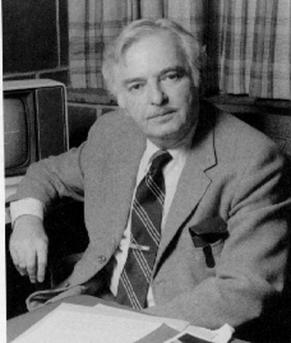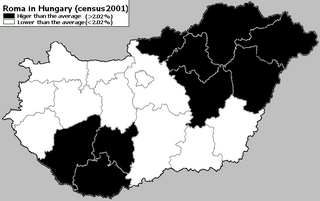Zoltán Kemény | |
|---|---|
 | |
| Born | 21 March 1907 |
| Died | 14 June 1965 (aged 58) |
| Nationality | Hungarian |
| Known for | Sculpture |
Zoltán Kemény (21 March 1907 – 14 June 1965) was a Hungarian sculptor.
Zoltán Kemény | |
|---|---|
 | |
| Born | 21 March 1907 |
| Died | 14 June 1965 (aged 58) |
| Nationality | Hungarian |
| Known for | Sculpture |
Zoltán Kemény (21 March 1907 – 14 June 1965) was a Hungarian sculptor.

Kemény was born in Bănița, Austria-Hungary (present-day Romania). He was the only Hungarian to win a prize at the Venice Biennale. He died in Zürich, Switzerland, aged 58.

John George Kemeny was a Hungarian-born American mathematician, computer scientist, and educator best known for co-developing the BASIC programming language in 1964 with Thomas E. Kurtz. Kemeny served as the 13th President of Dartmouth College from 1970 to 1981 and pioneered the use of computers in college education. Kemeny chaired the presidential commission that investigated the Three Mile Island accident in 1979. According to György Marx he was one of The Martians.

Baron Zsigmond Kemény was a writer from the Austrian Empire.
Kemény or Kemeny is a Hungarian surname, and may refer to:

George I Rákóczi was Prince of Transylvania from 1630 until his death in 1648. Prior to that, he was a leader of the Protestant faction in Hungary and a faithful supporter of Gabriel Bethlen, his predecessor as Prince. When Bohemian nobles requested military support in their struggles against the Habsburg monarchy, Rákóczi persuaded Bethlen to help and commanded Transylvanian forces in several battles. Rákóczi was elected prince after Bethlen's death, succeeding Bethlen's wife Catherine of Brandenburg and brother Istvan.

Michael Apafi was Prince of Transylvania from 1661 to his death.

Romani people in Hungary are Hungarian citizens of Romani descent. According to the 2011 census, they comprise 3.18% of the total population, which alone makes them the largest minority in the country, although various estimations have put the number of Romani people as high as 8.8% of the total population. They are sometimes referred as Hungarian Gypsies, but that is sometimes considered to be a racial slur.

Baron János Kemény was a Hungarian writer, theater director, dramatist, and founder of the Marosvécs/Brâncoveneşti Helikon community.
János Kemény or Kemény János may refer to:

Dénes Kemény is a former Hungarian water polo player who was the trainer and president of the Hungary men's national water polo team from 1997 to 2012. During his reign the Hungarian team won at least a medal in 24 of its 29 major tournaments, including three Olympic golds in a row between 2000 and 2008, making him one of the most successful water polo coaches in Olympic history.

János Kemény was a Hungarian aristocrat, writer and prince of Transylvania.

Bănița is a commune in Hunedoara County, Transylvania, Romania. It is composed of three villages: Bănița, Crivadia (Krivádia), and Merișor (Merisor).

Tibor Kemeny also referred to as Kemeny Tibor, was a Hungarian football player and coach, who played as a striker for Ferencváros and the Hungary national team. He was part of the team in the 1934 World Cup. He played one match in World Cup, against Austria in the quarter finals. With Ferencváros, he faced Juventus twice in 1938.

Baron Gábor Kemény was a Hungarian politician, who served as Minister of Foreign Affairs in the Government of National Unity led by Szálasi between 1944 and 1945. He prevented the diplomatic protests against the terror. After the fall of Budapest he tried to escape into Western Europe, but the arriving American troops captured him with other members of the Arrow Cross Party's government. He was tried by the People's Tribunal in Budapest in open sessions and sentenced to death for war crimes and high treason. Kemény was hanged in 1946 in Budapest. He was the youngest member of that Government.

Baron Gábor Kemény de Magyargyerőmonostor was a Hungarian politician, who served as Minister of Agriculture, Industry and Trade between 1878–1882 and as Minister of Public Works and Transport from 1882 to 1886. He was the son of Dénes Kemény, the secretary of state of the Interior Ministry during the Hungarian Revolution of 1848. Gábor Kemény was a corresponding member of the Hungarian Academy of Sciences since 1863 and served as chairman of the Hungarian Historical Society from 1887 until his death. He was a member of the Diet of Hungary from 1866.
Rezső (Rudolf) Kemény was a Hungarian violinist and violin teacher.

Kemény Castle, situated at the foot of the Călimani Mountains on the right bank of the Mureș River in Brâncovenești, Mureș County, Romania, is one of the finest examples of Hungarian Renaissance architecture in Transylvania. It was built using the remains of a Roman fortification situated not on the site of today's building but in the adjoining orchard.
Lajos Kemény is a Hungarian dermatologist, venereologist, allergologist, medical researcher, full professor and the Head of the Department of Dermatology and Allergology, the director of the Albert Szent-Györgyi Health Center, Faculty of Medicine, University of Szeged and the Vice-Rector for Science, Research Development and Innovation. He is a notable and respected scientist both in Hungary and around the world.

Ernő Kállai was a Hungarian art critic who was involved in the promotion of and theorisation around Constructivism.
Kemény, son of Lawrence was a Hungarian lord in the late 13th century, who served as Master of the cupbearers in 1289. During the era of feudal anarchy, he was one of the most powerful landowners in Southern Transdanubia, especially Baranya County. The Cseményi noble family descended from him.
Mihály Teleki, was Chancellor of Transylvania and adviser to Prince Michael I Apafi.